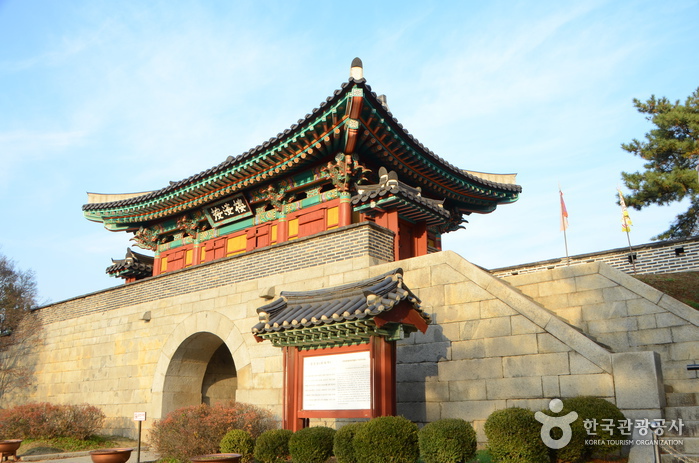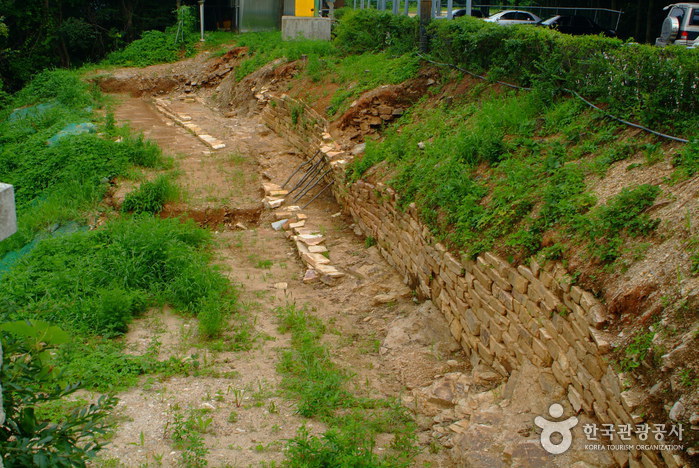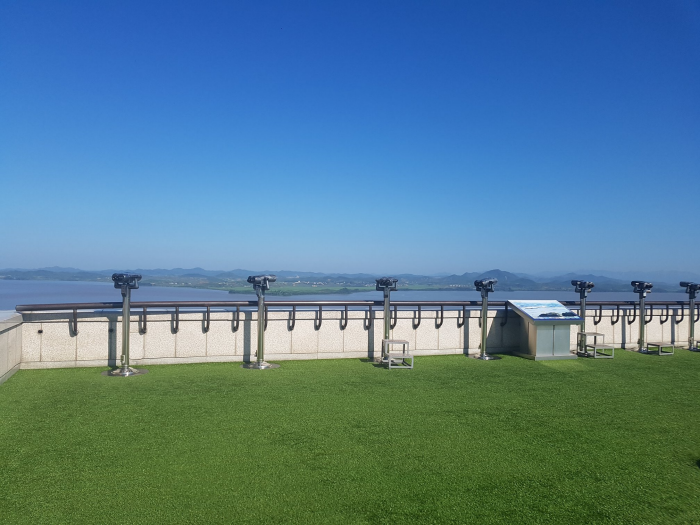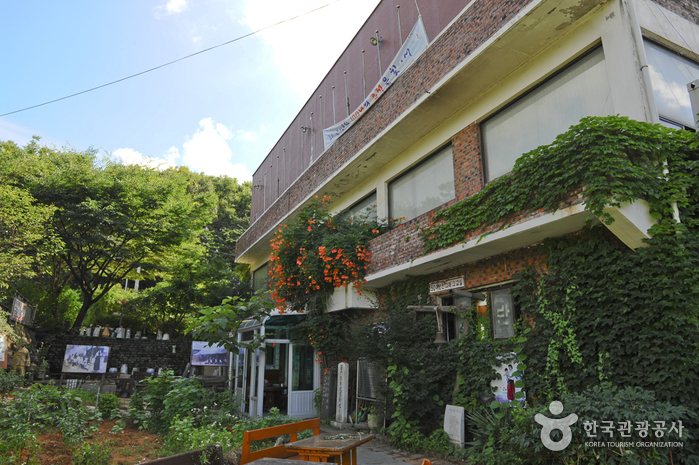[Ganghwa Nadeul-gil Course 4] Sunset Village Trail ([강화 나들길 제4코스] 해가 지는 마을 길)
8.2Km 2021-02-23
24, Cheonghadong-gil, Ganghwa-gun, Incheon
+82-32-934-1906
The Ganghwa Nadeul-gil Trails are a collection of walking paths along the coast of Ganghwa Island that connect the watchtowers and and walls of Ganghwasanseong Fortress, as well as royal tombs and other historically significant sites from the Goryeo dynasty that dot the island.
[Ganghwa Nadeul-gil Course 4] Sunset Village Trail
Course 4 stretches over an 11.5 kilometer area between Gareung Tomb and Mangyangdondae Fortification. This trail is especially popular among couples thanks to the romantic views of the sunset along the way. Other views include farming communities and fish markets.
[Ganghwa Nadeul-gil Course 3] Royal Tomb Trail ([강화 나들길 제3코스] 고려왕릉 가는 길)
8.2Km 2021-06-02
24, Cheonghadong-gil, Ganghwa-gun, Incheon
+82-32-934-1906
The Ganghwa Nadeul-gil Trails are a collection of walking paths along the coast of Ganghwa Island that connect the watchtowers and and walls of Ganghwasanseong Fortress, as well as royal tombs and other historically significant sites from the Goryeo dynasty that dot the island.
[Ganghwa Nadeul-gil Course 3] Royal Tomb Trail
Course 3 stretches over a 16.2 kilometer area between Onsu Parking Lot and Gareung Tomb. This trail showcases the royal tombs of the Goryeo dynasty. The trail passes through forested areas between tombs and temples.
[Ganghwa Nadeul-gil Course 1] Simdo History & Culture Trail ([강화 나들길 제1코스] 심도역사문화길)
8.2Km 2022-09-27
24, Cheonghadong-gil, Ganghwa-gun, Incheon
+82-32-934-1906
The Ganghwa Nadeul-gil Trails are a collection of walking paths along the coast of Ganghwa Island that connect the watchtowers and and walls of Ganghwasanseong Fortress, as well as royal tombs and other historically significant sites from the Goryeo dynasty that dot the island.
[Ganghwa Nadeul-gil Course 1] Simdo History & Culture Trail
Course 1 stretches over an 18-kilometer area between Ganghwa Bus Terminal and Gapgot Fortification. The trail includes sites such as Yongheunggung Palace, Ganghwahyanggyo Local Confucian School and an Anglican church. The course is an easy walk, with plenty of areas to stop and explore, as well as restaurants and convenience facilities for an enjoyable stroll.
Soswaewon Ganjang Gejang Gimpo Main Branch (소쇄원간장게장 김포본점)
8.8Km 2024-02-20
53 Geumpo-ro 1915beon-gil, Haseong-myeon, Gimpo-si, Gyeonggi-do
031-983-8801
Soswaewon Ganjang Gejang Gimpo Main Branch is a restaurant specializing in ganjang gejang (soy sauce marinated crab), housed in a hanok-style building. Ganjang gejang is a Korean dish consisting of live crabs marinated in a seasoning made by boiling various vegetables with soy sauce. In addition to their signature ganjang gejang jeongsik, the sogalbijjim jeongsik (braised beef galbi set menu) is also popular. The set menu includes a main dish, doenjang jjigae (soybean paste jjigae), dolsotbap (hot stone pot rice), and side dishes.
Gwangseongbo Fortress (광성보)
9.0Km 2022-07-25
27, Haeandong-ro 466beon-gil, Ganghwa-gun, Incheon
+82-32-930-7070
Gwangseongbo Fortress’s outer wall from the Goryeo era was mended in 1618. The fortress was built in 1656 and the outpost was constructed in 1679. It was completely remodeled into
a masonry castle with gates in 1745. During Sinmiyangyo (the American invasion in 1871), Gwangseongbo was the fiercest battle ground in Ganghwa. On April 24, 1871, a
fleet with 1,230 American naval forces led by Rear Admiral John Rodgers landed on Ganghwado Island to demand the
opening of Korea's ports and commerce. The armed forces attacked Chojijin Fortress
and Deokjinjin Camp, then marched to Gwangseongbo Fortress, where they engaged in close combat with the warriors of Joseon. Although General Eo Jae-yeon and the other warriors were poorly equipped with far inferior weapons, they bravely fought to the
death against the invading forces.
The battlefield ruins of the fortress and the gate towers such as Anhaeru, Gwangseongdon, Sondolmokdon, and Yongdudon were repaired
in 1977. The twin tombs of General Eo Jae-Yeon and his brother Eo Jae-seon, along with the anonymous tombs of warriors who died on the battlefield were
also honorably arranged at the same time. Furthermore, a stone monument commemorating the restoration of Ganghwa Battlefield was erected on Yongdudondae Post.
In 1988, an extensive rest area was created toward the shore for visitors’ convenience. Gwangseongbo Fortress is presently designated as Historical Relic No. 227. A religious service known as Gwangseongje is held annually to commemorate the patriotic spirits of General Eo Jae-yeon and other unnamed warriors. This service takes place at 11 a.m. on every April 24th of the lunar calendar.
Odusanseong Fortress (파주 오두산성)
9.9Km 2024-12-03
Seongdong-ri, Paju-si, Gyeonggi-do
Odusanseong Fortress is built around the strategic summit of Odusasn Mountain. The walls stretch across roughly 620 meters and were built during the Baekje dynasty. The fortress is built on the intersection of the Imjingang River and the Hangang River on the summit of Odusan Mountain (119 meters). The mountain’s slope is steep and stones used in the construction of the fortress walls are scattered here and there at the summit. These scattered stones are evidence that the fortress underwent repairs several times during the Samguk (Three Kingdoms) era and the Joseon dynasty, as these stones were evidently quarried and used to mend the fortress walls. Excavations have discovered a great deal of earthenware, white porcelain, tile, and iron arrowheads. Topographically, the fortress sits on a prime strategic junction and the Unification Observatory has been situated there as well. The fortress stands as an important object of study concerning fortifications and structures from the Baekje dynasty. It has been recorded on the stele of King Gwanggaeto, Samguksagi (History of the Three Kingdoms), in the Naekjebongi (Baekje Annals) and on Daedongyeojido (Map of Korea) that the fortress was the Gwanmi Fortress of Baekje, attracting many scholars and researchers interested in this period.
Odusan Unification Observatory (오두산 통일전망대)
10.0Km 2024-12-03
369 Pilseung-ro, Paju-si, Gyeonggi-do
+82-31-956-9600
Located in Tanhyeon-myeon, Paju-si, Odusan Unification Observatory was established to console the feelings of dispersed families and provide an educational site for the unification education through 5F to B1 in 1992.
The observatory is situated in the northernmost ceasefire line of the western front where the Hangang River and Imjingang River meet. It offers a wide view of Songaksan Mountain in Gaeseong to the north and 63 Building in Seoul to the south. Also, it is a valuable unification security tourist attraction related to Imjingak, the 3rd Tunnel, and Panmunjeom (Joint Security Area) stretching along Jayu-ro Road in the northeast.
Since its opening, almost 1,900,000 people have visited the observatory to feel the reality of the division, making this area the best national unification education site.
Deokpojin Museum of Education (덕포진교육박물관)
10.1Km 2021-02-26
90, Deokpojin-ro 103beon-gil, Gimpo-si, Gyeonggi-do
+82-31-989-8580
Deokpojin Museum of Education was established by Kim Dong-seon, an elementary school teacher, for his wife, Lee In-suk who lost her eye sight due to an accident while she was also an elementary school teacher. He decided to build the museum to cheer up his wife who was deeply depressed with the fact that she could no longer teach students. Through the husband's will to give his wife opportunities to teach children again, his dream to create hands-on educational programs not available in the ordinary school education system became a reality as well. The museum was finally opened in 1996 with materials collected by the couple, comprised of a music class taught with her pump organ and Mr. Kim's collection of various school materials such as a book wrapper, a nature textbook from 1960, nickel silver lunch boxes and more. These collections attracts many visitors, from kindergarteners to university students and even family visitors.
Arrebol (아레볼)
10.2Km 2024-02-08
309-12 Soraji-ro, Paju-si, Gyeonggi-do
Arrebol is a charming brunch café renowned for its beautiful sunset views. The sensitively designed interior showcases a variety of desserts, including bread, cookies, and macarons. The Arrebol espresso, blending sweet orange flavor with smooth cream, perfectly complements the rich coffee taste. Popular brunch items, such as the Let's Arrebol (plate set menu) and ratatouille sandwich, are also beloved choices. From the third, fourth, and rooftop floors, visitors can fully enjoy the view of the Hangang River.
Café Calming
10.3Km 2024-02-28
311 Soraji-ro, Paju-si, Gyeonggi-do
Café Calming is a serene dessert café celebrated for its stunning view of the Hangang River, offering a tranquil escape. The café's signature dish is the saengmango bingsu (shaved ice with fresh mango), which is garnished an entire sliced mango on top. Its spacious interior and outdoor terrace provide plenty of seating, with the terrace exuding the feel of a Southeast Asian resort. Alongside this, the café serves homemade scones that complement their slightly sour espresso perfectly. A notable highlight of the Café Calming is its stunning views of the Hangang River at sunset.
![[Ganghwa Nadeul-gil Course 4] Sunset Village Trail ([강화 나들길 제4코스] 해가 지는 마을 길)](http://tong.visitkorea.or.kr/cms/resource/16/1895216_image2_1.jpg)
![[Ganghwa Nadeul-gil Course 3] Royal Tomb Trail ([강화 나들길 제3코스] 고려왕릉 가는 길)](http://tong.visitkorea.or.kr/cms/resource/11/1895211_image2_1.jpg)
![[Ganghwa Nadeul-gil Course 1] Simdo History & Culture Trail ([강화 나들길 제1코스] 심도역사문화길)](http://tong.visitkorea.or.kr/cms/resource/97/1895197_image2_1.jpg)





 English
English
 한국어
한국어 日本語
日本語 中文(简体)
中文(简体) Deutsch
Deutsch Français
Français Español
Español Русский
Русский